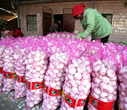China Perspective
Southeast Asia tops agenda of global investors
By Wang Xiaotian (China Daily)
Updated: 2009-11-11 07:51
The Association of Southeast Asian Nations (ASEAN) will become a hub for global trade as it draws more interest from countries worldwide in acknowledging free trade within the region, analysts have said.
Six outside members of the treaty, including China, Japan, South Korea, Australia, New Zealand and India, have developed free trade area policies with ASEAN and will realize zero tariff policies in the next year. Among them, the China-ASEAN Free Trade Area (CAFTA) will be the biggest by a population of 1.9 billion.
From the start of next year, more than 90 percent of products imported from six main Southeast Asian countries to China will be tariff-free as CAFTA grows.
"For enterprises in ASEAN, increasing trade and investment from China will bring extensive communication and multiple opportunities for economic cooperation. Cooperation on agriculture, environment protection, energy, intellectual property rights, and especially among medium- and small-sized enterprises will also kick off to promote mutual development," said Zhang Xinwei, analyst from Chinese Academy of International Trade and Economic Cooperation.
On Nov 4, 2002, then Chinese premier Zhu Rongji and leaders from 10 ASEAN countries signed the Framework Agreement on ASEAN-China Comprehensive Economic Cooperation, marking the initial setup of the Free Trade Area.
According to the agreement, the free trade area would be completed by 2010, and four new ASEAN members - Laos, Cambodia, Myanmar and Vietnam - have been allowed an additional transitional period of five years and are required to join by 2015.
CAFTA is expected to cover an area with a combined gross domestic product of $2 trillion when completed in 2010.
The estimated total trade volume of $1.2 trillion will make the area the third largest market in the world, after the European Union and the North American Free Trade Area.
Trade between China and ASEAN has been booming in the past 16 years and grew more than 20 percent a year before the financial crisis. China has become ASEAN's third largest trade partner, while ASEAN ranks fourth to China.











